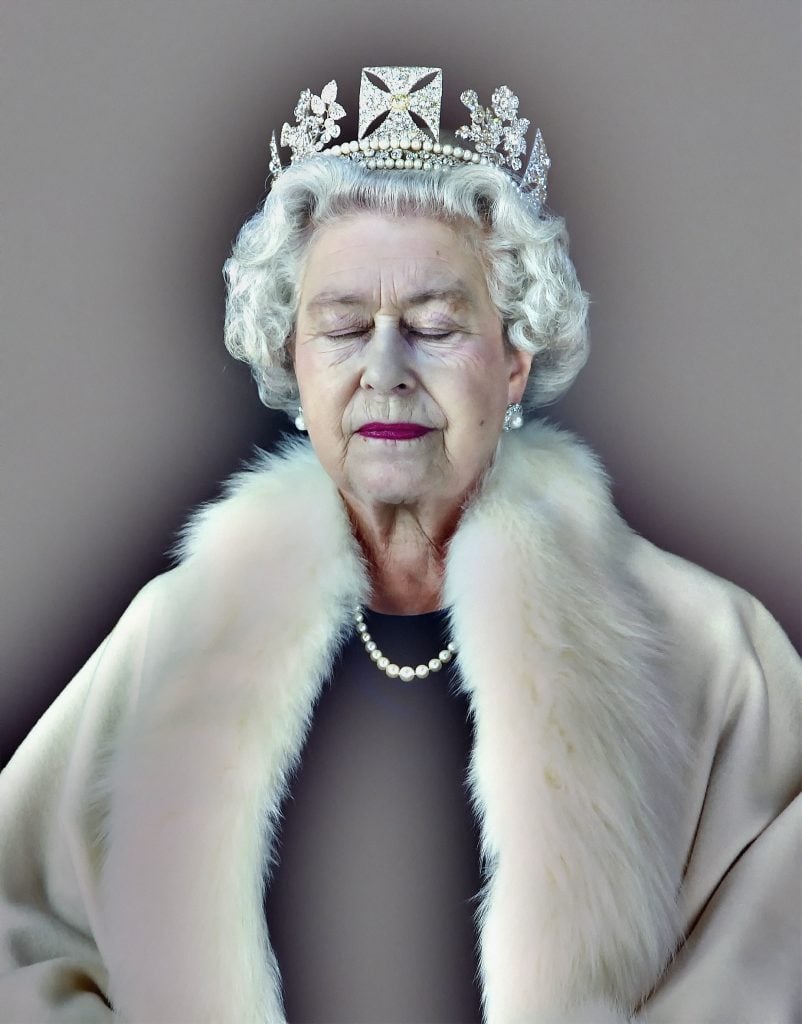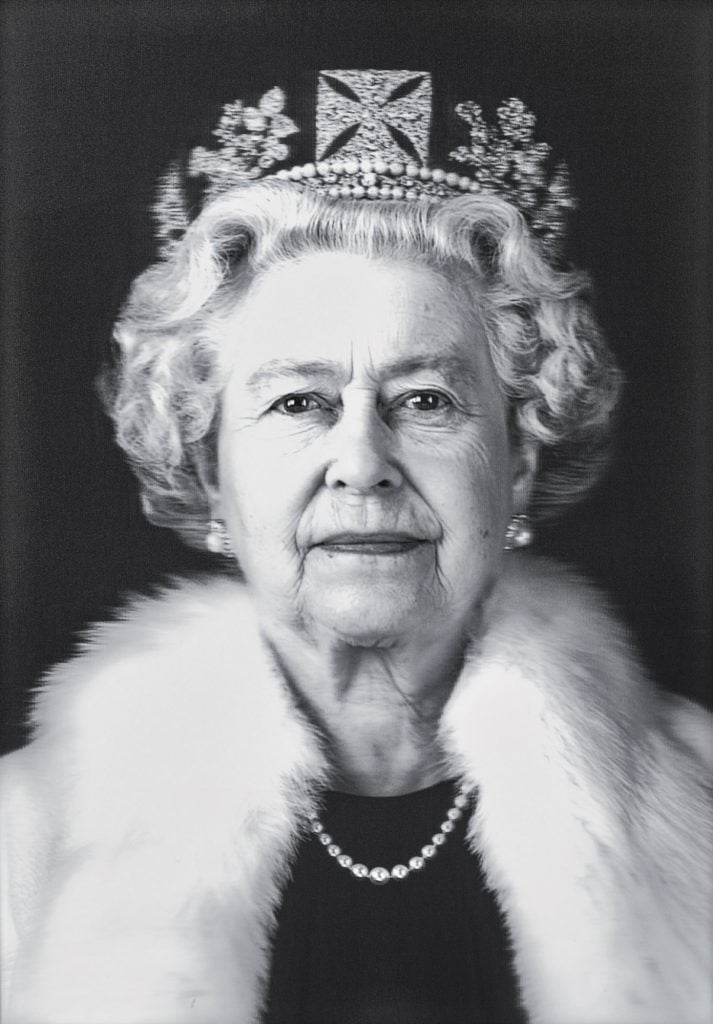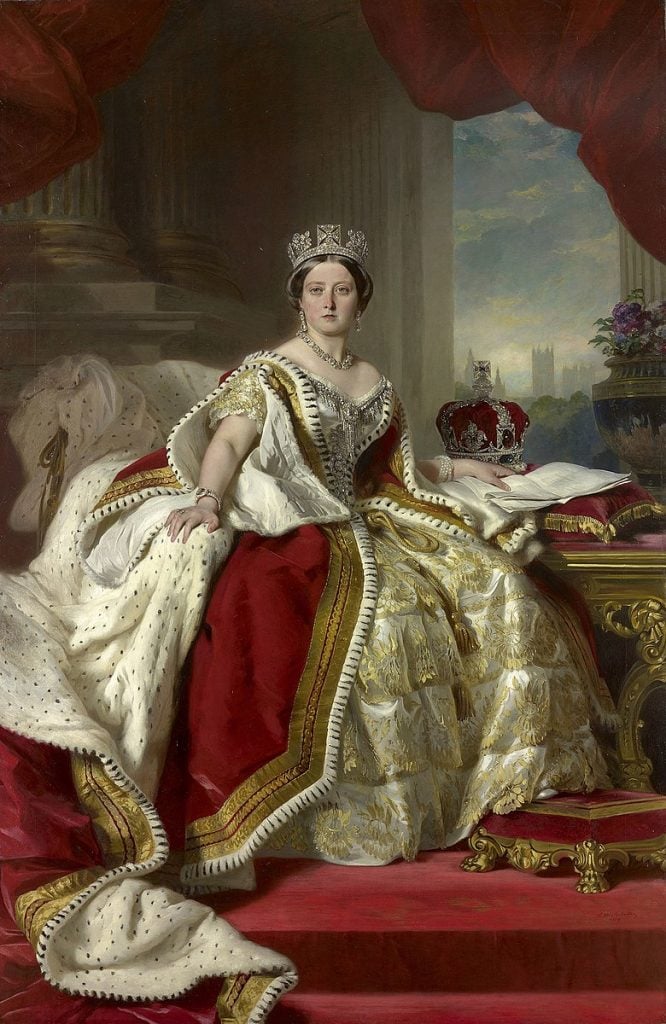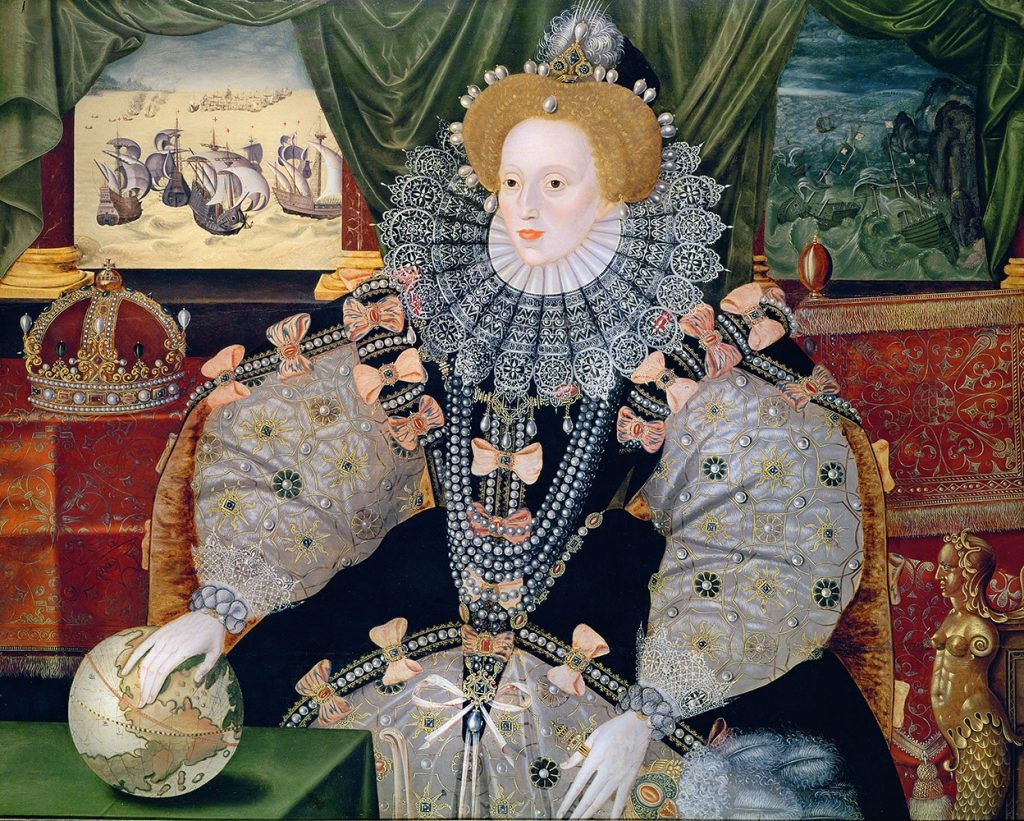Pop Culture
Think You Knew the Queen? These 3 Facts About Her Most Famous Portrait Will Make You Think Again
Photographer Chris Levine captured this indelible image almost by accident.

Photographer Chris Levine captured this indelible image almost by accident.

Katie White

Ninety-six-year-old Queen Elizabeth II is the longest-reigning monarch in English history, and by quite a stretch. She surpassed the previous record, set by her great-great-grandmother, Queen Victoria, back in 2015. Last year, she marked her 70th year on the throne, to which she ascended in 1952, following the death of her father, King George VI. This year, the United Kingdom will celebrate the first-ever 70th Jubilee during a special June 2–5 holiday weekend.
In terms of art history, Queen Elizabeth II is undoubtedly one of the most captured visages of our time. She has sat for more than 200 official portraits and been snapped in photographs by countless photographers. While images of the royal family are smattered across contemporary media, royal portraiture is, itself, an ancient art: Monarchs since the days of ancient Egypt have sent their likenesses to the farthest corners of their empires, and to foreign dignitaries as well, in highly choreographed propaganda campaigns. In England, courtiers often commissioned commemorative paintings to underscore their devotion to the ruler, particularly in the first Elizabethan era.
When it comes to Elizabeth II’s portraits, many have earned their artists acclaim, and a few have garnered intense disdain (Lucian Freud’s 2001 depiction received an infamously vitriolic response. One critic of the time described the Queen’s depiction that that of a corgi).
On the eve of the jubilee, we decided to take a closer look at one of the most beloved portraits of Queen E—The Lightness of Being (2004) by Canadian photographer Chris Levine, who captures the stately sovereign as beatific, serene, and certainly majestic.
We took a closer look at Levine’s famous photograph of the monarch and found three facts that might just change the way you see it.

Chris Levine, Equanimity (2004). Courtesy of Sotheby’s.
While almost celestial in appearance, the photograph is also a decidedly human portrait. While Queen Elizabeth I was portrayed as a youthful beauty well into the last years of her life, here Queen Elizabeth II bears the badges of age, with a shock of white hair and wrinkles lining her face. Yet the image nevertheless exudes power and a sense of calm and serenity. The Queen sits against a blank gray backdrop that could be imagined as the state of her mind. Lightness of Being is unique in that it captures a sense of calm around the famously energetic monarch. “One thing all artists will tell you is that the Queen does not sit still…And you really cannot say, ‘Ma’am, will you please bloody well sit still,’” one portraitist, John Wonnacott, who painted the royal family in 2000, told the Telegraph. Levine brought a tempering influence: “Increasingly my work and direction have been informed directly out of meditation. Stillness is a portal to the divine, and by taking my subjects towards stillness, it allows for a more soulful connection with the subject, and that light radiates in the work,” he has said of the image.
Levine is known for photographs that explore the outer limits of light’s relationship to photography, including holograms, and the staging for this shot was particularly bright. “My Queen sittings took place not long after I first found meditation. I was very conscious of Her Majesty’s breathing and timed the 3D camera pass with her breathing cycle to infuse a sense of calm into the image. Lightness of Being was captured when I asked Ma’am to rest between camera passes,” Levine told Artnet News.

Franz Xaver Winterhalter, Queen Victoria (1959).
Ahead of the sitting, the royal staff called Levine to choose a few items for the queen to wear for the portrait. “Up until that point, I had assumed I’d be working with whatever Ma’am decides to wear on the day and I was ok with that, but instead I got to style Her Majesty and that included making a selection from the Crown Jewels,” Levine explained. Among Levine’s selections the George IV State Diadem tiara, also known as the Diamond Diadem, which Elizabeth II had worn during her coronation. “I chose the diadem for its beautiful understated simplicity compared to some of the more ornate creations, and for its cross,” Levine noted. The crown is encoded with regal iconography, too. It was first commissioned by the lavish-living George IV in 1820 and has since been worn by queens and their consorts on official occasions. The diadem is decorated with some 1,333 diamonds weighing a total of 320 carats. An icon of the throne, the crown appears on stamps and currency and was often sported by Queen Victoria. Symbolically, the diadem boasts four bouquets of roses, thistles, and shamrocks—references to England, Scotland, and Ireland, and the queen’s dominion over those regions.

One of three “Armada Portraits” of Queen Elizabeth I, painted after England’s maritime defeat of Spain (1588).
The present Queen Elizabeth is often depicted wearing pearls. In Levine’s portrait, her usual three strands are reduced to an elegant single strand. While a seemingly innocuous choice, the inclusion of pearls has deep symbolic import. English Queens have worn pearls since time immemorial. “Pearls are traditional for queens going back 1,000 years—there has never been a queen who didn’t wear pearls,” Leslie Field, author of The Queen’s Jewels, told People magazine in an interview. Queen Elizabeth I was particularly associated with the jewel, symbolizing her chastity and connection to Artemis, the Greek goddess of the moon. As for Queen Elizabeth II, pearls also hold familial significance. Taking a cue from her namesake, the queen’s parents gave her a chain to which they added two pearls on every birthday. Upon her father’s coronation, the queen was given a full necklace in 1937.